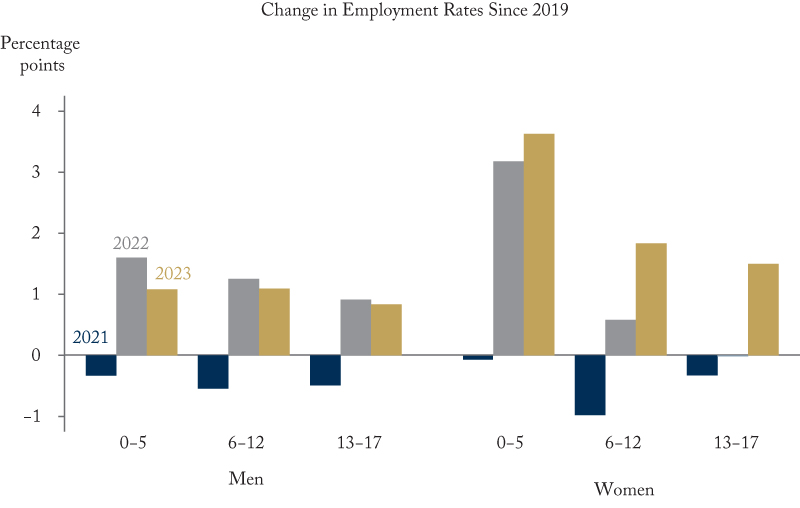From: Tammy Schirle
To: Canadians and policymakers concerned about gender equity
Date: March 8, 2024
Re: Are Jobs Becoming a Little Less ‘Greedy’?
Claudia Goldin, the most recent winner of the Nobel Prize in Economics, has suggested a large part of the remaining gender gaps we see in the labour market are really driven by “greedy work and hours.”
Simply put, many jobs have demanding hours – either long hours or inflexible schedules – and the more demanding jobs tend to pay more. The schedule, however, makes it impossible to balance caregiving and paid work expectations. As women are more likely to be held responsible for primary caregiving of children, we see gender gaps arise in employment and earnings after children are born that persist for many years as women sacrifice paid career opportunities for the well-being of their family.
Might the ‘greediness’ of jobs be changing in the Canadian labour market? Opportunities to work from home – either entirely or partially – have clearly increased since the COVID-19 pandemic began. According to Statistics Canada, about 20 percent of Canadians worked most of their hours from home in November 2023. While far more were working from home in the spring of 2020, the 2023 rates are nearly three times what we observed in Canada pre-pandemic.
Alongside this, we’ve seen a sizeable increase in employment rates over the past few years. Compared to 2019, the employment rates of all parents (aged 25-54) were higher in 2023. For men with kids aged 5 or younger, employment rates were 1.1 percentage points higher, with similar changes observed among men with older kids.
But much larger increases in employment rates are seen recently among women, especially those with the youngest kids. In 2023, employment rates among women with kids aged 5 or younger were 3.6 percentage points higher than in 2019, and most of that increase had occurred in 2022.
What might be driving this large increase in employment for moms with the youngest kids? I think there are two factors worth investigating further.
First, we might expect these moms to have benefitted the most from any changes in the ‘greediness’ of jobs driven by the shift toward work-from-home options. With improved opportunities to balance work and caregiving schedules, more women may be finding new jobs or better able to remain with their current employer.
Second, we must acknowledge the potential impact of the Canada-Wide Early Learning and Child Care agreements between the provinces and the federal government. The immediate impact of these agreements was to reduce the direct cost of licensed childcare for parents able to find it. The CWELCC agreements could also alter expectations of new mothers, who may anticipate expansions of childcare availability in their near future and therefore place a higher value on their career development now. These are the mechanisms through which the CWELCC may have driven more parents to participate in the labour market.
At this point in time, it’s too early to know the extent to which these are the leading factors driving increases in employment rates of moms with young kids. It is a story I’ll be watching unfold over the coming months as I expect our policymakers will as well.

Tammy Schirle is a Professor of Economics at Wilfrid Laurier University, and is a C.D. Howe Institute Research Fellow.
To send a comment or leave feedback, email us at blog@cdhowe.org.
The views expressed here are those of the author. The C.D. Howe Institute does not take corporate positions on policy matters.





